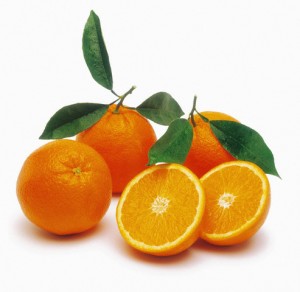 Soil selection
Soil selection
Sandy loam is best for the cultivation of Citrus. The most important factor in the choice of site is free/drainage of water. Soils with an underlying hardpan of about 1m or less to the top mock soils, or slain sites are not suitable. Apart from these, citrus can be grown on a wide range of soil types. Citrus is not shade loving, therefore clear the site of all tree stumps and plough before setting in the plants.
Varieties
Citrus consists of many species, some of which are not even edible. Some varieties of the edible ones have however been recommended to the public. These include:
Species Recommended varieties__________
Sweet Orange Hamlin, Valencia, Agege Parson Brown, etc.
grapefruit Durean, Marsh, Ruby Red, etc.
Tangerine Dancy, Algerian, Clementine, etc.
Tangelo (grapefruit Lake, Minneola, etc.
x Tangerine)
Lemon Lisbon, Eureka, etc.
Lime Key, West Indian,.
Propagation
Citrus is almost entirely propagated by budding. Plant only budding seedlings in orchards as unbudded seedlings may not be true-to-type, and often takes a long time to fruit. They are also susceptible to disease attack. Obtain budling by selecting a required bud and uniting this with a suitable rootstock. Make sure the budlings are obtained from repured sources.
Orchard establishment
Plant the orchard when the rainy season has fully set in. In the south this is around May, but about June in the north. Complete planting holes, well in advance, before purchasing the budling. These holes should be 25 cm x 18 cm and 7 cm apart in either direction. Set the trees in these holes (which have been half–filled with rich topsoil) and shovel in back the soil firmly around the trees. Always ensure that the trees are planted no deeper than they had grown in the nursery.
Orchard management
WEED CONTROL
Absolute weed control under a hot, humid climate may be very expensive, nevertheless there is need for some level of weed control. Slash the orchard at least 3 times in the year, the last being at the on-set of the dry season. In addition, ring weed individual trees constantly. Ring-apply Diuron or Paracol to check weed growth.
INSECT PEST CONTROL
The control of insect pests on citrus depends on the stage of development. Nursery pests are mostly leaf-eating insects like caterpillars and plant ‘bud’. Control the caterpillar with Cymbush, Ambush, Decis or Sherpa plus at the rate of 0.9–1.00 Liters E.C. formulation in 300 Liters of water per hectare. The fruit fly, fruit piercing moth, and ‘bud’ control can be achieved through effective intergrated approach with close supervision by experts.
Holes dug 25 cm x 18 cm and 7 cm apart in either direction for citrus transplant. rich top-soil
CONTROL OF FUNGAL DISEASES
There are two major disease of citrus.
A group affects leaves, stem and roots. The others are fruit diseases which originate from the field and continue at storage. Some of these diseases are twig or branch dieback, foot rot and Brown rot gummosis and blast. Control the fungal diseases by applying Benlare at 20 g/ 10 L water on the trees with any wetting agent. You can curtail fruit anthracnose and Phytophthora rot by applying either Thiabendazone at 10 ml/ 10 L water or Benlare at 10 g/ 10L water. In case of Gummosis, Scab and Root rot attack, seek the advice of crop protection experts.
Fertilizer application
Do not apply any organic fertilizer at planting or during the 1st year of planting in the orchard. Thereafter apply the following recommendation in a shallow furrow around the trees (corresponding to the drip-margin of the canopy).
(a) 2–4 years of age: 500 grams of compound fertilizer N.P.K (15:15:15) per trees, twice in the year.
(b) 5–10 years of age: 2 kg (15:15:15) + 600 grams k20 per tree, twice in the year.
(c ) 10 years and above: 3 kg (15:15:15) + 800 grams k20 per tree, twice in the year.
These applications should be done in June and September to obtain maximum benefit.
Irrigation
Citrus trees will wilt and yield will be depressed unless moisture is provided during the long dry season of November to February. Therefore, make sure that the trees are watered during this period. Ten liters of water (stream water, well water, tap water, etc.) delivered at the base of the trees twice a week is sufficient for good development and yield.
Intercropping citrus with selected field crops
Spacing of citrus (7 m x 7 m) is relatively wide and allows for considerable land to remain unproductive for some years while no income is obtained from citrus. At least for the first 3 years before citrus trees start fruiting the wide inter-row spaces can be cropped to compatible field crops such as pineapple, water melon, egusi melon, cowpeas, okro, soya, sweet potato etc. The recommended doses of fertilizer dressing for each of these crops should be used. Adopt effective pest/disease management. This practice maximizes land utilization, controls to farmers before citrus trees start fruiting.



